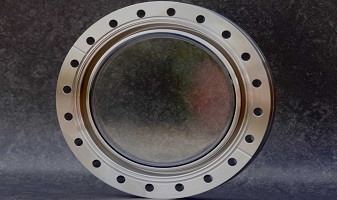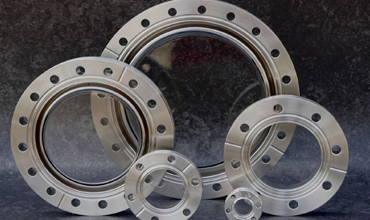In the intricate world of vacuum technology, where precision and reliability are paramount, the role of vacuum viewports cannot be overstated.
These essential components allow scientists, engineers, and technicians to visually monitor, illuminate, or even introduce laser beams into vacuum systems without compromising the vacuum integrity.
Here at Moore’s Glassworks, we are proud to work with many companies across various settings, providing high-quality vacuum viewports that are always fit for purpose.
Given their critical function, the maintenance and care of vacuum viewports are indispensable for ensuring their longevity and performance.
But how does one go about maintaining these sophisticated pieces of glassware?
In this blog, we’re going to find out, so let’s take a look.
Understanding Vacuum Viewports
At their core, vacuum viewports are windows that seal off vacuum environments, constructed from materials like glass, quartz, or sapphire to withstand the harsh conditions of vacuum systems.
These viewports find their use in a myriad of applications, from electron microscopy to high-energy physics experiments, where a clear view into the vacuum chamber is crucial.
However, these components face challenges such as thermal stress and exposure to aggressive chemicals, making their maintenance a key concern.
Maintenance Tips for Vacuum Viewports
Routine Inspection
Regular inspection is the first line of defence in viewport maintenance.
It’s vital to check for any signs of damage, such as scratches, cracks, or dents, which can compromise the vacuum integrity.
Similarly, inspecting seals and gaskets for wear and tear is crucial, as even minor imperfections can lead to vacuum leaks.
It is always a good idea to set up a schedule to make sure you don’t go a long time without a visual assessment of your viewport.
Cleaning Procedures
Keeping vacuum viewports clean is essential for optimal performance.
Start by gently wiping the surface with a lint-free cloth to remove any dust or particles.
For more thorough cleaning, use a mild detergent or isopropyl alcohol, applying it with a soft, non-abrasive cloth.
It’s important to avoid harsh chemicals or abrasive materials that could scratch or damage the viewport.
Not just for maintaining a good condition, but for many applications of these items, you need to have a clear and unobstructed view into the chamber, and therefore ensuring your viewport is always clean is paramount.
Proper Installation and Handling
As with many things, ensuring you get it right straight from the beginning is vital. Proper installation is key to preventing damage.
Always handle viewports with care, using clean gloves to avoid fingerprints and contamination.
Ensure that all mounting surfaces are clean and smooth before installation, and avoid overtightening, which can stress the material.
When removing a viewport, do so gently to avoid damaging the flange or the seal.
The key is to use just enough force to do the job without risking damage to the viewport itself. This can be tricky, especially if you lack experience in this job, and therefore if you do need to do this job, then seeking professional help is often a good idea.

Care Tips to Extend Lifespan
Avoiding Contamination
Minimising exposure to dust and other contaminants is crucial.
In environments where contamination is a concern, consider using protective covers when the system is not in use.
Implementing regular cleaning practices can also significantly reduce the risk of contamination, which leads us back to the points made earlier.
Temperature and Pressure Considerations
Vacuum viewports are sensitive to extreme temperatures and sudden pressure changes.
Avoid exposing viewports to direct sunlight or other heat sources that could cause thermal stress.
Gradually adjust the vacuum pressure to avoid sudden changes that could crack or damage the viewport.
Sudden changes are when issues can occur, so always be wary of the environment your viewport is in.
Chemical Compatibility
Knowing the chemical compatibility of your viewport material is crucial.
Some materials, like certain types of glass, can react with specific chemicals, leading to etching or degradation.
Always check the manufacturer’s guidelines for chemical resistance and avoid exposing viewports to incompatible substances.
Any viewport from Moore’s Glassworks will come with all of the information you need to ensure you can care for your item.
Troubleshooting Common Issues
Even with meticulous care, issues can arise.
Fogging, for example, can often be addressed by cleaning the viewport with appropriate solvents.
Leaks around the viewport might require reseating or replacing the seal.
If you encounter visual distortions, this could indicate stress or damage to the viewport, necessitating professional evaluation.
Vacuum Viewports from Moore’s Glassworks
The maintenance and care of vacuum viewports are critical for the longevity and efficiency of vacuum systems.
Regular inspections, proper cleaning, and mindful handling are the cornerstones of keeping these components in top condition.
By adhering to these guidelines, users can ensure their vacuum systems perform optimally, extending the lifespan of their viewports and maintaining the integrity of their experiments and processes.
If you’re a business in need of a high-quality vacuum viewport, then why not get in touch with Moore’s Glassworks?


Leave a Reply